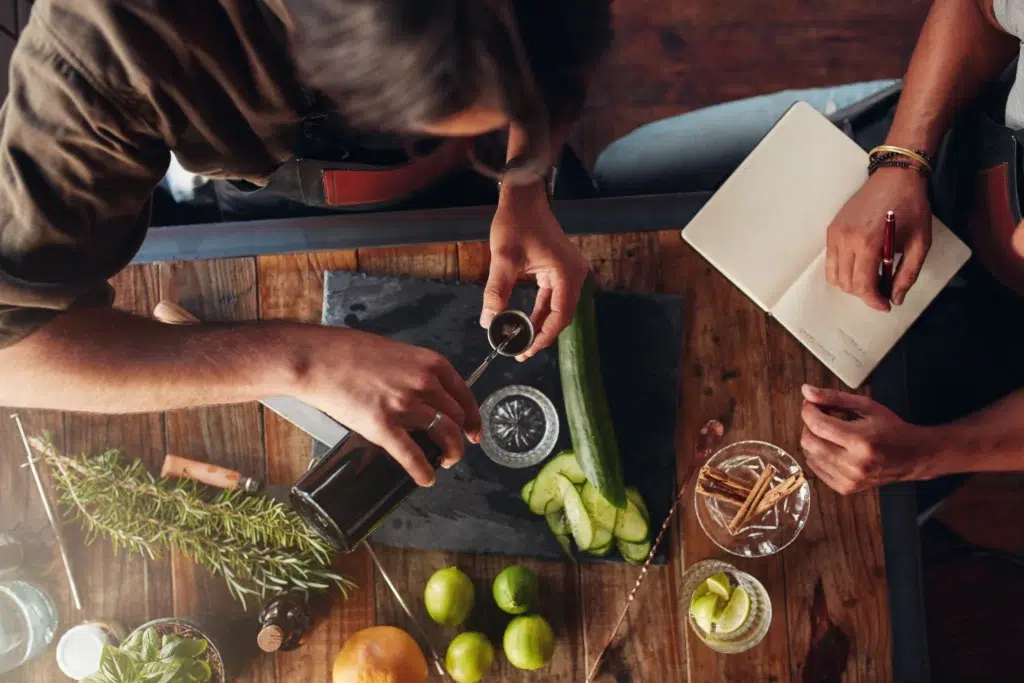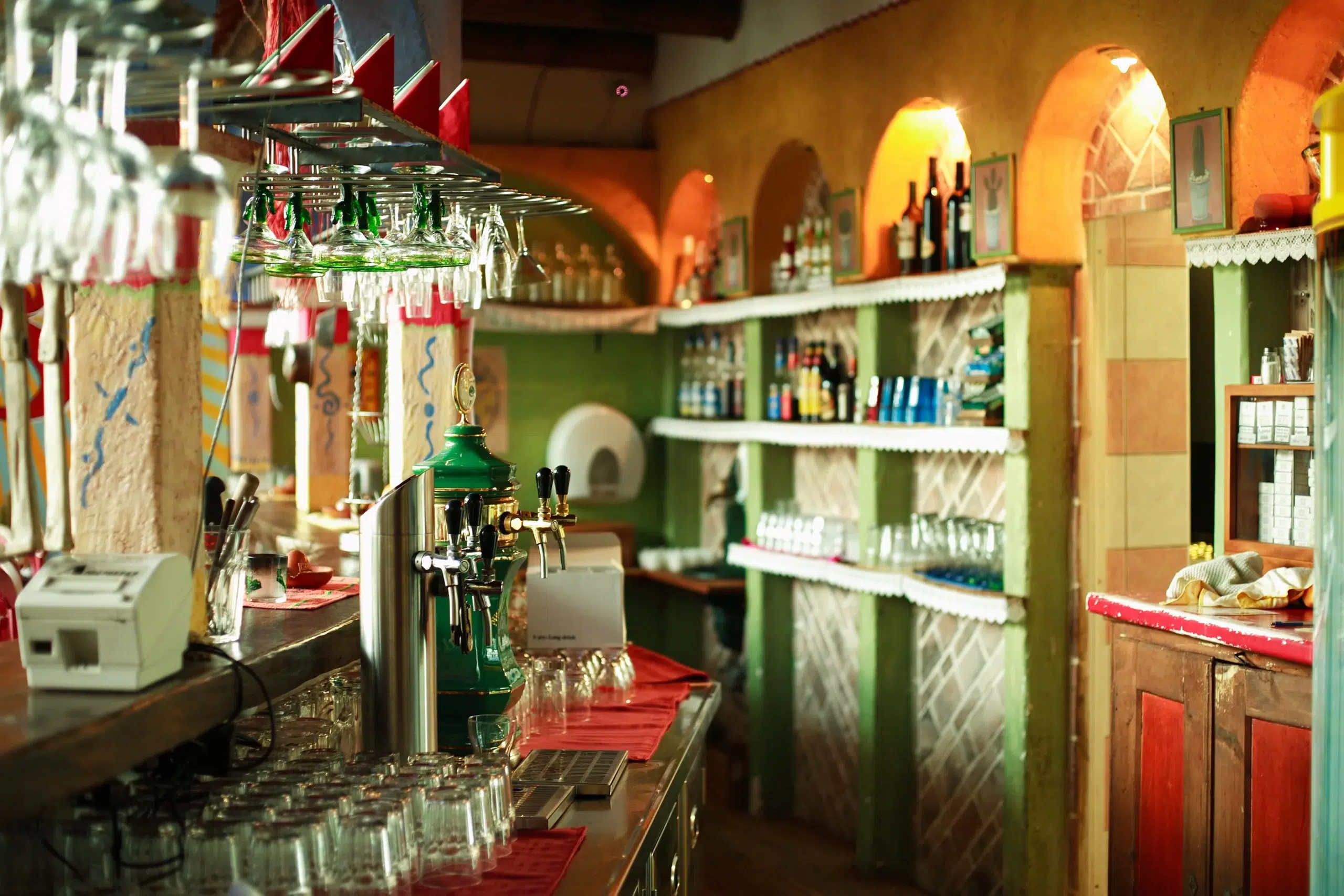If you have ever visited a bar or a restaurant, you have encountered a hard-working bar back. Although bartenders are often front and center, the barback of an establishment plays a very important support role.
Whether you already own a bar or restaurant or are looking to open one, a barback should be on your list of needed employees. Here we break down what a barback is, their responsibilities, and how you can be sure to hire a good barback.
What is a barback?
A barback is similar to a busser, but for the bar. A barback’s job is to ensure that everything at the bar is running smoothly for the bartender. They provide them with the tools they need and extra support or hands to get drinks out in proper fashion. This can include:
-
- Stocking liquor
- Replenishing glasses
- Replacing juices
- Cleaning messes
Barbacks spend more time behind-the-scenes in the kitchen prepping things like garnishes, juices, syrups, and on the floor in the bartender’s section helping them clear tables or spills.
Barbacks, like bussers, can be hired with no previous restaurant experience. Many barbacks hope to one day become a bartender, and it is a great way to learn the ropes early.
Why is a barback important?
A barback is essential to the smooth operation of a restaurant or bar for several reasons. Firstly, by providing support to the bartenders, barbacks help ensure that customers receive their drinks quickly and accurately. This contributes to a positive customer experience and helps to increase customer satisfaction and loyalty.
Another benefit of having a barback on your team is increased efficiency and streamlined communication. Barbacks help to free up bartenders from tasks such as prepping ingredients or tapping a keg, allowing them to focus on making drinks and serving customers. Being inbetween the front of the house and back, barbacks communicate messages from the kitchen to the bartenders and vice versa for smooth service.
Barbacks also play a key role in reducing costs for your establishment. By ensuring that bar supplies and equipment are always well-stocked, barbacks help to prevent over-purchasing and reduce waste. They also help to keep the bar area clean, reducing the need for frequent deep-cleaning services, which can be time-consuming and expensive.
What are a barback’s responsibilities?
Barbacks have their own duties for before, during, and after each service, just like any other restaurant worker. When you are hiring a barback, you can expect for them to help out in the areas below.
Before service
-
- Make sure bar is clean and fully stocked
- Prepare garnishes (sliced limes, lemon wedges, olives, etc.)
- Juicing and preparation of batched syrups and mixers
- Creating fresh batched cocktails
- Stocking silverware, plates, and drinkware
- Refill icewells
- Replace beer kegs if needed
- Make sure all prepped food, juices, cocktails, etc. are labeled and dated
- Prepare clean rags and sanitation buckets
During service
-
- Run dirty dishes and glasses through the dishwasher and sanitation
- Polish wine glasses and any additional drinkware needed
- Wipe down bar and ensure restaurant floor stays tidy
- Assist bartenders with any needs
- Restock garnishes and prep more for next service
- Take out trash
- Clear and reset bar tables/stools
- Run drinks
After close
-
- Take out the remaining trash
- Wipe down bar
- Put away any deliveries that arrived during service
- Track closing inventory
- Remove and take bar mats outside for cleaning
- Mop behind bar
- Restock for the next shift
What are barbacks paid?
Since barbacks are entry-level positions, they are usually paid the state’s minimum hourly wage. On top of this wage, they are also tipped out by fellow bartenders and wait, staff.
Depending on your bar or restaurant tipping structure, the tips barbacks receive are normally 1-2% of your total sales, of 5-20% of total tips. A barback is well worth the investment for your bar, and ensuring your staff tips them out properly is a great way to keep your service running smoothly.
What do you look for in a barback?
The most important part of hiring a barback is determining what your state laws require around the age for alcohol service. Once that is established, here are a few skills to look for.
Hard skills:
-
- Knowledge of basic bartending techniques, such as proper drink handling and pouring beer.
- Ability to handle and maintain bar equipment, such as blenders, ice machines, and glassware.
- Ability to work quickly and efficiently under pressure in a fast-paced environment.
- Ability to follow health and safety regulations, such as food handling and storage procedures.
Soft skills:
-
- Strong communication skills.
- Ability to work well as part of a team and to take direction from others.
- Good organizational skills and attention to detail.
- Positive attitude and strong customer service skills, including the ability to handle difficult or dissatisfied customers in a professional manner.

How to train a barback
It is always important to properly train your staff to make sure that they are following the standards of service at your establishment. And since barbacks tend to be entry-level, this may be their first job. Use these tips to train your barback:
-
- Onboarding: Onboarding is the process of introducing new employees to your establishment, including company policies, procedures, and work environment. For a barback, this might involve an overview of the bar area, training on food and beverage service, health and safety regulations, customer BYOB policies, and customer service. It’s important to ensure that the barback understands their role and responsibilities, as well as the expectations for their job performance.
- Menu Education: This training teaches your barback about the menu offerings, ingredients, and preparation techniques for the drinks and foods served at your establishment. This training is crucial because barbacks need to be able to assist bartenders with drink preparation and service, as well as answer customer questions about menu items. Providing hands-on training with mock drinks, tastings, and recipe demonstrations can be helpful in this process.
- Learning while shadowing: Shadowing involves observing and following a more experienced barback or bartender to learn about the day-to-day operations of the bar. This gives the new barback the opportunity to see how drinks are made, how customers are served, and how the bar is managed. Shadowing can be an effective training tool as it allows the barback to see the process in action and to ask questions in real-time. Additionally, shadowing can help the barback build confidence and become familiar with the bar environment before taking on more responsibility.
Conclusion
Ultimately, the key to a successful bar or restaurant operation is having a strong team in place. With a dedicated barback on your team, you can rest assured that your bar area will be well-stocked, organized, and always ready for service.
By using a tool like CAKE’s bar point-of-sale system, bar owners can enhance their operations, improve their service, and grow their business. With features such as real-time reporting, inventory management, and split checks, bar owners can make informed decisions and provide their staff with the necessary tools for success. Consider integrating our user-friendly POS into your training process for a more streamlined and effective approach to running your bar.







